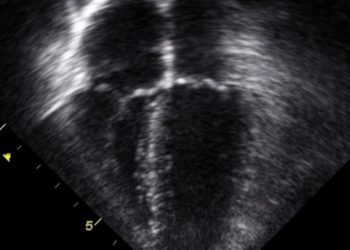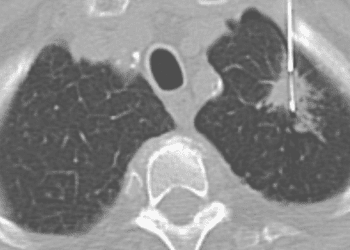Long telomere syndrome is associated with an increased risk of developing neoplasms
1. In this case series, protection of telomeres 1 (POT1) mutations associated with long telomere length conferred an increased risk of developing benign and malignant solid neoplasms.
2. The risk of developing these neoplasms was mediated by extended cellular longevity.
Evidence Rating Level: 1 (Excellent)
Study Rundown: Telomere length is often predictive of the onset of replicative senescence and functions as a mitotic measurement tool. Telomeres shorten with cell division and short dysfunctional telomeres indicate DNA damage, which elicits a cellular response that eventually leads to senescence or apoptosis. The protein POT1 binds the single-stranded 3′ end of the telomere. It is a conserved, essential protein and protects telomeres from exonuclease degradation. However, there is a gap in knowledge as to understanding the role of heterozygous POT1 mutations, and whether they contribute to telomere deprotection, genome instability, telomere elongation, or telomere shortening. Overall, this study found that POT1 mutation carriers led to an increased rate of neoplasms in addition to clonal hematopoiesis, uncovering an inherited cancer-predisposition mechanism that is distinct from that of mutations affecting tumor-suppressor proteins and oncoproteins. This represents an extended cellular lifespan that supports clonal evolution with aging. This study was limited by the paradox at the intersection of aging and cancer biology, as long telomere length leads to increased age, but also an increase in clonality and neoplasms. Nevertheless, these study’s findings are significant, as they demonstrate that POT1 mutation carriers that confer a longer telomere length also confer a predisposition to familial clonal hematopoiesis and increased risk of benign and malignant solid neoplasms.
Click to read the study in NEJM
Relevant Reading: Telomere Length and Clonal Hematopoiesis
In-Depth [case series]: This case series involved participants from a Johns Hopkins University research study dedicated to understanding the role of telomeres in disease. Patients who were heterozygous for POT1 mutations, along with their relatives, were eligible for the study. Patients who did not have such mutation carriers were excluded from the study. The primary outcome measured was telomere length with the use of flow cytometry and fluorescence in situ hybridization at Johns Hopkins Hospital Laboratories, and the data were plotted relative to a clinically validated nomogram. Outcomes in the primary analysis were assessed via exploratory analysis with Mann-Whitney tests. Based on the primary analysis, a majority of the POT1 mutation carriers with telomere length evaluated (9 of 13) had long telomeres (>99th percentile). POT1 mutation carriers had a range of benign and malignant neoplasms involving epithelial, mesenchymal, and neuronal tissues in addition to B- and T-cell lymphoma and myeloid cancers. Five of 18 POT1 mutation carriers (28%) had T-cell clonality, and 8 of 12 (67%) had clonal hematopoiesis of indeterminate potential. A predisposition to clonal hematopoiesis had an autosomal dominant pattern of inheritance, as well as penetrance that increased with age; somatic DNMT3A and JAK2 hotspot mutations were common. Successive generations showed genetic anticipation. In contrast to noncarrier relatives, who had the typical telomere shortening with age, POT1 mutation carriers maintained telomere length over the course of two years. In summary, this study demonstrates that POT1 mutations associated with long telomere length conferred an increased risk of clonal hematopoiesis and a range of benign and malignant neoplasms.
Image: PD
©2023 2 Minute Medicine, Inc. All rights reserved. No works may be reproduced without expressed written consent from 2 Minute Medicine, Inc. Inquire about licensing here. No article should be construed as medical advice and is not intended as such by the authors or by 2 Minute Medicine, Inc.







